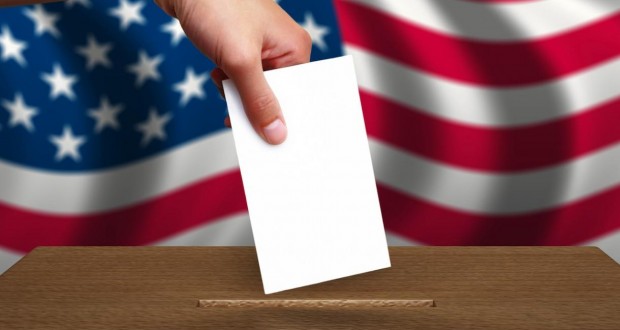This month we analyze the impact of the US presidential campaign on the way the American economic and financial situations are perceived. We all know that reality is a matter of perception.
Our readers have probably noticed that recently we have spoken less frequently of the US economy in our bulletins. The reason is simple: we were tired of repeating over and over again that the economic fundamentals were still bad, contrary to what we were made to believe. Yet, we realize that the mastery of communication on the state of the country – cover up of bad news combined with self-persuasion about a kickback and dropping bombs of bad news about the Euro area and the BRICS – was enough to deflect the crisis to the outside and to maintain the illusion of an invincible America.
Thus, we would have been better to follow the reorganization of the rest of the world, nevertheless, remaining alert to those factors weakening the beautiful coherence of the US rebound speech. One thing is for sure: this reality cover up definitely prevented the United States from settling their recurrent problems: no real consolidation, no US self-questioning since 2009. On the contrary, communication seemed to palliate all problems.
We believe that, at this stage, the presidential campaign provides the resurgence of realistic conditions conducive to the “hard-landing” anticipated by our team earlier this year[1]. The whole of American society is currently divided between two disparate groups spinning around two opposing targets:
– Maintain the status quo; continue to control the positive communication, make announcements of interest increases as proof of the good health of the US economy, with the aim of having Hillary Clinton elected;
– Reveal or over-dramatize the economic situation with anticipations of a huge disaster, contributing to panic opinions, in order to impose a radical change in policy, and the change would be brought about by Donald Trump.
It is in this light, therefore, that we are studying the news coming out of the US press, noting that reality probably lies between these two extremes. Even if the US has not officially recognized the reality of the extensive economic difficulties, it does not mean they don’t exist. The real aim of the cover up was to protect the financial sector, a mirror of the collective psychology more than of reality. The US-centred financial markets are at risk, but our readers know that we recognize a great difference between how dependent the world was on the US in 2007, and how things stand today. We must repeat that the world has made a great organisational effort in the past ten years, and many alternatives exist now, a good barrier in the event of a crash.
US presidential campaign: an indicator of the state of the country
Despite the poor quality of the US debates, the presidential campaign is allowing a “moment of truth”, a freedom of speech related to the fracturing of the society (including of the establishment itself) into two camps. Yet, in the case of the current ultra-polarized country, the usual split between Democrat and Republican supporters has become a widening chasm showing unexpected images of the country’s situation.
And, suddenly, alarmist articles on the US economy are blooming. Besides the political shows that we have seen on TV, there is also the fact that communication is slowing down by itself. For example, let’s take the Fed’s announcements: Ms. Yellen is managing with more and more difficulty to guide the markets[2] with her reassuring-but-not-too-much statements and her close-but-distant interest rate increases, which never really happen after all (we will get back to this point later).
With the approaching election, it has become impossible to hide the problems that were previously buried under the good national news or the foreign news – because election campaigns usually force nations to talk about themselves and recognize their own problems. Strangely, it is precisely at this time that monthly statistics on employment start to dive[3], with a worst month of May since 2010 for job creation (while March and April were revised sharply down), causing some panic[4] just before a Fed meeting which planned to raise its key interest rate[5], but finding now a good excuse to wait a little longer.
The financial world is also beginning to worry openly… Over 10,000 billion dollars of sovereign bonds currently have negative rates (nearly the Euro zone’s GDP, to give an idea of the scale). Yet, the motivation of an investor who buys a negative rate bond is not to lose money: he hopes that rates will drop again, and he will make a profit by selling it (since it would become more interesting in a low rate environment). This spiral, or rather the fear of a jam when rates rise, creates great anxiety for Bill Gross, for example, who is warning of the explosion danger of nothing less than a “supernova”[6].
George Soros, on the other hand, is betting on the imminent fall of the markets, so he is selling its shares to buy gold[7]. Goldman Sachs also sees a strong market decline in the twelve months to come[8], which means around the US election. According to the aforementioned bank, the markets are about to enter the “despair” mode[9], in a configuration that strongly reminds us of 2007…
Moreover, the mainstream media articles are multiplying and alerting us about current similarities with 2007: bond markets have never been so valued, yet returning so little[10]; financial markets are levitating[11], now even more so than in 2000 and 2007; the dreaded shock of a possible Brexit makes the British pound as volatile as in 2008[12]; we are hearing of subprime mortgages in the US again, this time within the declining automotive sector, where poor quality loans represent 20% of the total and see their default rate dangerously increase[13]…
Alerts on the economical situation are currently raining down, perhaps hoping to avoid the tragedy of 2008 – which had been anticipated by almost no one – by calling global economic players to come to the rescue of a cataclysm which would touch us all, like it occurred in the past. But this time the US is facing independent actors, decidedly less worried about the US destiny and largely focused on their own problems: China is slowly but surely laying the foundation for a new world (more on this below); Russia goes its own way no longer worrying about pleasing the West in order to stay alive; US oil producers seem to have surrendered to the war of prices led by OPEC[14], at a time when bankruptcies are increasing, etc.
Figure 1 – Oil production of the US (blue line) and of the OPEC (white line), 2015-2016. Source: Bloomberg.
To sum up, the “hard landing” of the US economy, in a Hollywood-style remake of 2008, does not seem far away.
Admittedly, in addition to finance, the outlook for the real economy is also very dark in the US[15], with the ever growing debt (public and private) becoming increasingly worrying[16] (households are as indebted as in 2008, again); the employment rate which, after three encouraging months, is declining again (less than 63% participation in the labour market compared to 67% in 2000); food stamps at the highest level with 45 million people concerned[17]; the oil sector cannot take any more suffering from low prices, while the latter do not even help the US economy[18]; the on-going decommissioning of households, etc.
Figure 2 – Average net worth in the US, 1983-2013. Source: Pew Research Center.
Of course, we could go on painting the portrait of a society where unemployment, poverty, bankruptcy, and social problems are becoming more and more relevant. All this is nothing new. Yet, what is new, after all, is that all these elements are emerging suddenly in the media because of the conflicting interests that are fighting before the November election. It’s that time of great risk when fire can be set to the powder and cause the “hard-landing” that we anticipated in January.
Somehow, the surge of bad news and collective revelations about the fact that no problems have really been solved in the past 10 years are pushing many operators to a deep feeling of discouragement and will most probably tempt them to pass the hot potato to Trump…
An independent Fed, really?
Officially, the elites are still collectively behind Clinton, even if it is not quite sure what position to take in order to help her out. The Fed is in the same position as it wavers between raising the interest rates to give a supposed signal of improvement of the economy (but taking the risk of suffocating financial markets), or on the contrary, by holding rates steady until after the elections, to give some air to the country, even if that means pointing fingers to a fragile “recovery”[19] (by the way, we need to remind you that the president of the Fed, Janet Yellen, is openly a Democrat [20]…).
As a matter of fact, some other aspects should be considered. The US needs a strong dollar to attract foreign investments and mask the weakness of their own economy: this requires the Fed to raise its interest rate and present a more attractive country for foreign capital.
3 – Jobs created by direct foreign investments (FDI) in the US. Source: International Trade Administration.
Yet, a higher dollar is undermining the country’s competitiveness at the international level and is therefore causing trouble for exporters; moreover, it helps to maintain oil prices at a low level, while badly damaging the US oil industry.
Figure 4 – US energy sector, debts and percentage of profits, 2015 and 1st quarter 2016. Source: SRSrocco Report.
The equation is not simple at all – in fact, it is a dead end, and once again the communication skills will be much needed to successfully walk the tightrope above the precipice, but for how long? And even if this game continues without a hitch, could this really prevent Trump from winning the White House?
Caught between two fires, Yellen will undoubtedly respect the announcement of increased interest rates by the end of the year (probably at the most appropriate time, to show that all is well before the election, meaning, in September or October) in order to keep Fed’s credibility high, but it will be an insignificant increase, the US economy not being able to support more, as we have already repeatedly analyzed.
2017: end of the groomed trail
The election deadline of November 2016 is visibly establishing an unsurpassable horizon now. Even the rest of the world seems relatively on hold, unable to do anything but prepare for the worst from that date on, while acting as if nothing has happened by then. While Europe is recovering[21] (through a quiet period permitted by the refocusing of US newspapers on their own country) and is beginning to solve its economic problems (not its political ones, unfortunately), the Middle East is gradually coming out of the doldrums, thanks to new interactions between major regional players[22], and China and Asia are gradually taking their place in the global leadership[23]. But all of these countries are nevertheless on hold, waiting for the American voters to choose. As we have seen, there is much uncertainty in this respect…
However, in the logic of “turning QE”, which we have already spoken about, the easing policy of the ECB and the BoJ is helping the United States promote a strong dollar, which is beginning to stiffen the concerned regions[24] … Many voices are raised, stopping this kind of monetary policy, mostly because they feel it is not always in the interest of the region. Similarly, European sanctions against Russia are completely opposed to the European needs, but are there to serve Uncle Sam exclusively. Many leaders see this[25]. Even Juncker is stating that “we cannot allow our relations with Russia to be dictated by Washington[26]” and is taking a daring trip to Moscow this month[27]!
Thus we see a decoupling between the US on the one hand, and the rest of the planet on the other, an economic as much as a political separation. Thus, in case of a “hard-landing” of the US economy, obviously there will be a global shock wave, but it will be less destabilizing than in 2008.
Until then, the US-centred world continues to live openly in an atypical environment, while behind the scenes the rest of the world does its best to manage the transition. It must be assumed that all recent economic developments are temporary, and 2017 will simply have nothing to do with them. The Fed’s attempt to increase interest rates, a strong dollar, oil prices below $50 a barrel, rising stock markets, sanctions against Russia, European quantitative easing, etc.: all should soon stop. Besides, the G20 in Hangzhou will set the basis for a broad global reorganization from September on.
Thus, for the following six months, if we had to give any advice, it would be this: wait and see…
[1] GEAB no. 101, January 2016.
[2] Source: Business Insider, 29/03/2016.
[5] Source: New York Times, 07/06/2016.
[6] « Negative yields will lead to ‘supernova’-like market implosion ». Source: Market Watch, 10/06/2016.
[11] Source: MarketWatch, 11/12/2015.
[13] Source: Seeking Alpha, 06/06/2016.
[15] Read for instance this very instructive article: « The Next Big Crash of the U.S. Economy Is Coming, Here’s Why » (source: SRSrocco Report, 26/05/2016). Or: « 5 factors that could turn America into another collapsed empire » (source: MarketWatch, 06/06/2016).
[16] Source: Wall Street Journal, 25/05/2016.
[18] Source: New York Times, 21/01/2016.
[19] Read on this topic: « Could an ‘accident’ by Janet Yellen derail Clinton? » (source: Politico, 01/12/2015).
[21] Source : Wall Street Journal, 29/04/2016.
[22] As we have seen it in the last bulletin.
[23] Particularly China with the organization of a very ambitious G20, announcing development and world cooperation (source: China Daily, 26/05/2016)… Other indicator of China’s international activism: its investment bank (AIIB) should gather one hundred states before the end of 2016 (!) (source: Straits Times, 01/06/2016).
[24] Sources : Telegraph (10/03/2016) ; Financial Times (20/04/2016) ; Bloomberg (14/04/2016), etc.


 LEAP2040 Toutes les informations et archives Europe2040
LEAP2040 Toutes les informations et archives Europe2040







